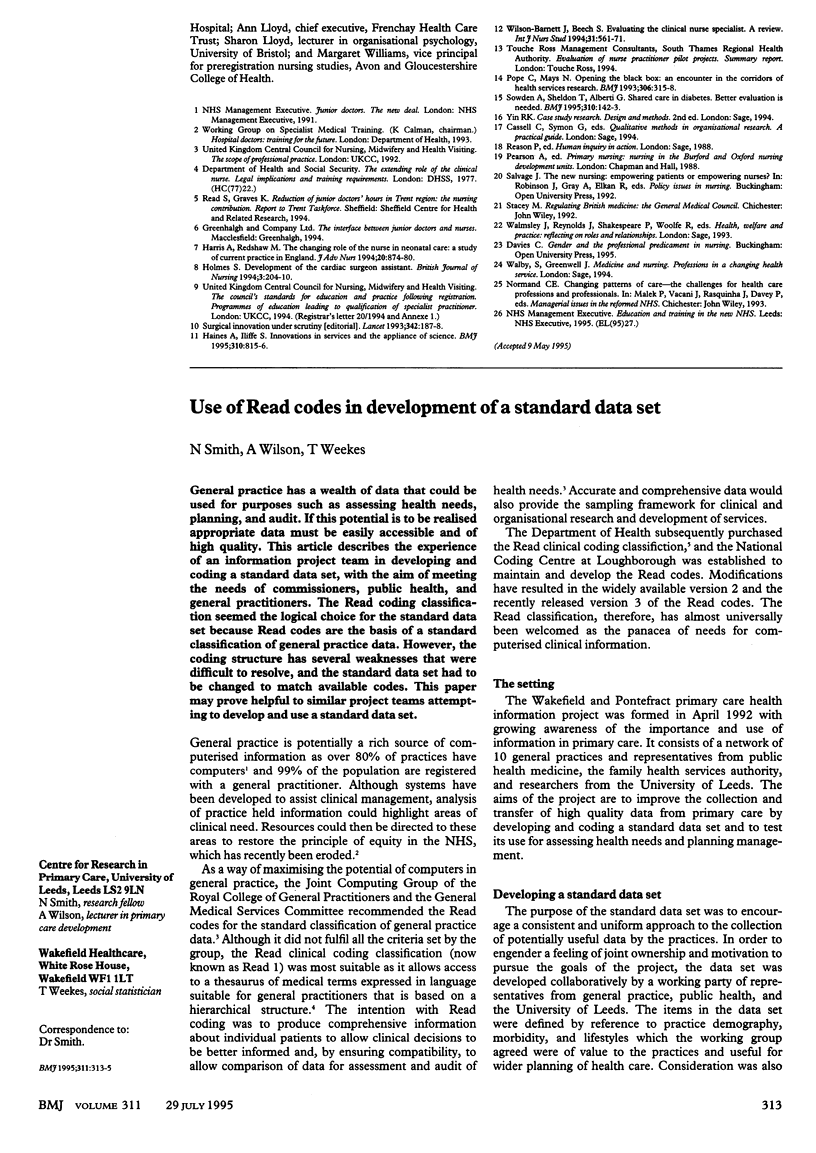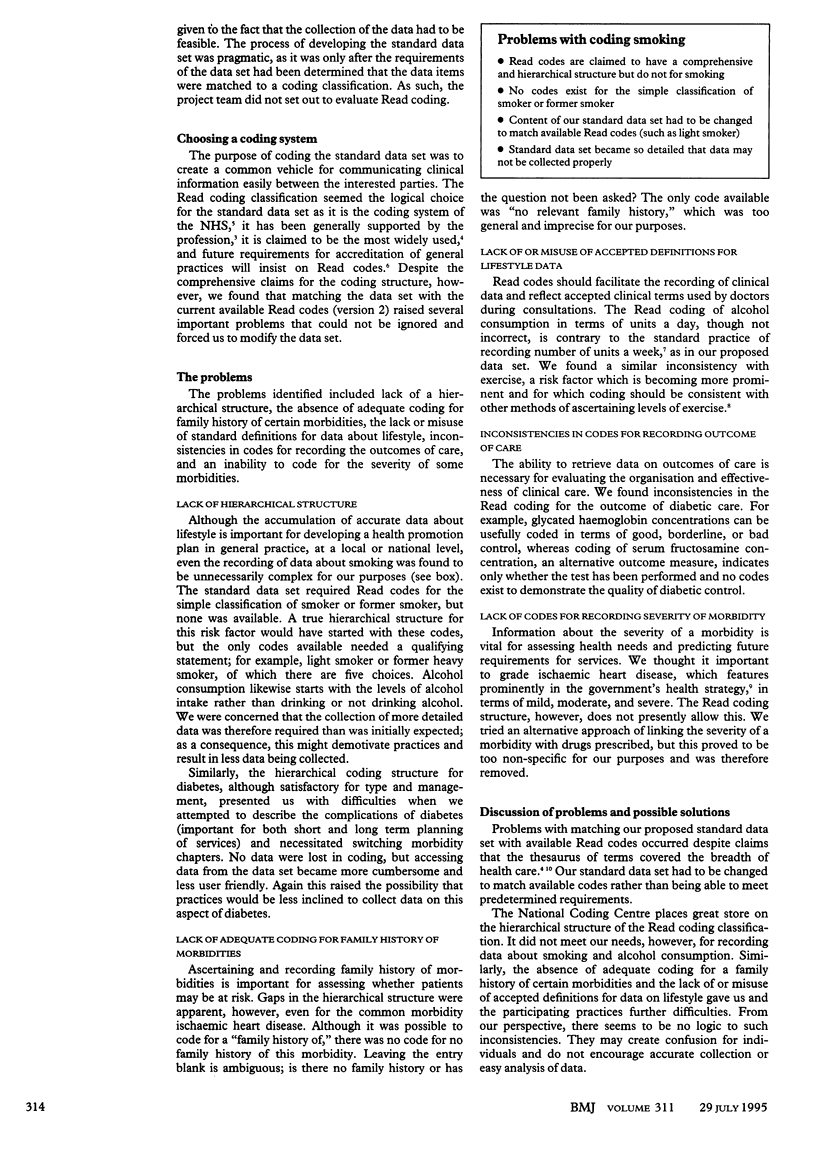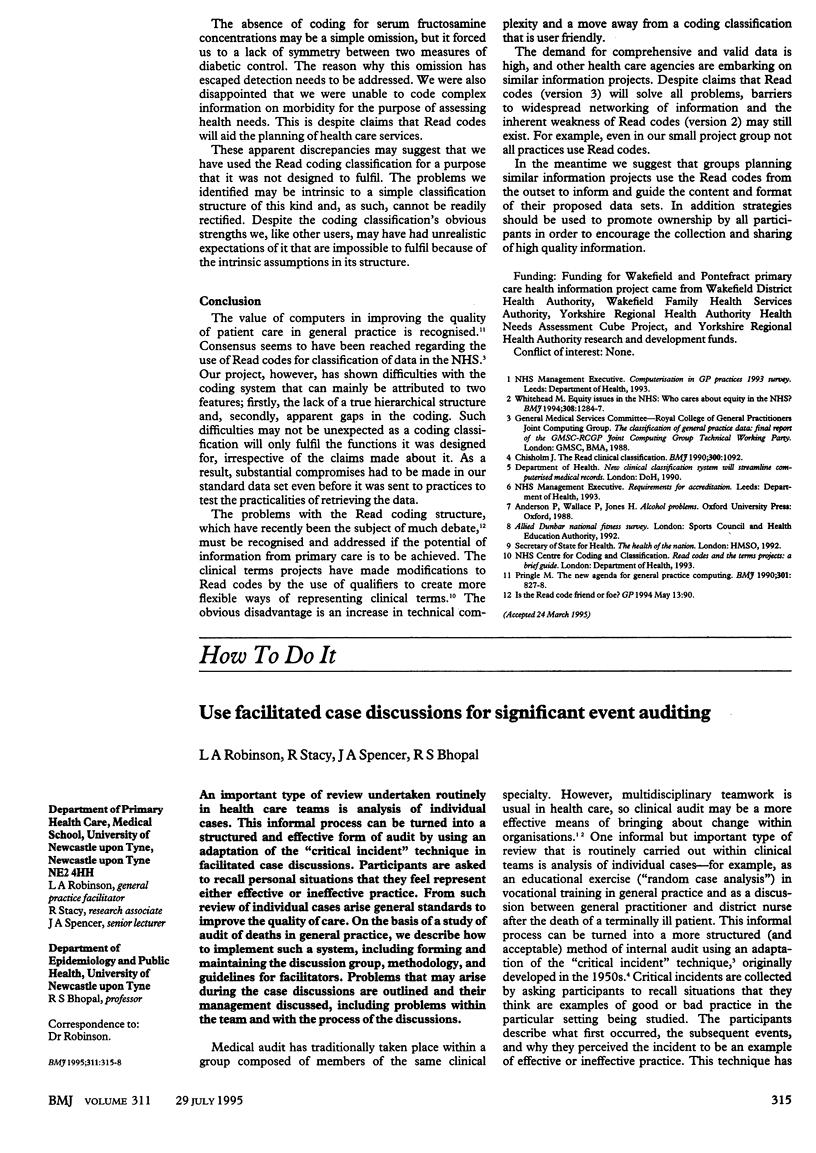Abstract
General practice has a wealth of data that could be used for purposes such as assessing health needs, planning, and audit. If this potential is to be realised appropriate data must be easily accessible and of high quality. This article describes the experience of an information project team in developing and coding a standard data set, with the aim of meeting the needs of commissioners, public health, and general practitioners. The Read coding classification seemed the logical choice for the standard data set because Read codes are the basis of a standard classification of general practice data. However, the coding structure has several weaknesses that were difficult to resolve, and the standard data set had to be changed to match available codes. This paper may prove helpful to similar project teams attempting to develop and use a standard data set.
Full text
PDF


Selected References
These references are in PubMed. This may not be the complete list of references from this article.
- Chisholm J. The Read clinical classification. BMJ. 1990 Apr 28;300(6732):1092–1092. doi: 10.1136/bmj.300.6732.1092. [DOI] [PMC free article] [PubMed] [Google Scholar]
- Pringle M. The new agenda for general practice computing. BMJ. 1990 Oct 13;301(6756):827–828. doi: 10.1136/bmj.301.6756.827. [DOI] [PMC free article] [PubMed] [Google Scholar]
- Whitehead M. Who cares about equity in the NHS? BMJ. 1994 May 14;308(6939):1284–1287. doi: 10.1136/bmj.308.6939.1284. [DOI] [PMC free article] [PubMed] [Google Scholar]


